Studying India
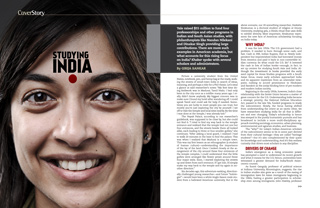
Yale raised $55 million to fund four professorships and other programs in Indian and South Asian studies, with philanthropists like Nandan Nilekani and Dinakar Singh providing large contributions. There are more such examples in American academia, but what accounts for this rising focus on India? Khabar spoke with several scholars and administrators.
Picture a university student from the United States, notebook, pen, and hemp bag at the ready, walking the streets of small-town India in search of ideas, meaning, and perhaps a title for a PhD thesis. Let’s steal a glance at said researcher’s notes: “My first time doing fieldwork was in Madurai, Tamil Nadu. I had only been to the city once as a toddler many years ago. I really didn’t know anybody. My biggest concern was to make sure I found my hotel after wandering off. I could speak Tamil and could ask for help if needed. Sometimes you are lucky to meet people you can trust, but mostly you’re just exploring the city by yourself. I set off to visit the temple and local sites nearby. By the time I was done at the temple, I was already lost.”
The Nayak Palace, according to our researcher’s guidebook, was supposed to be close by, but she could not find it. “I tried to find my way back to the temple entrance and realized that the temple had not one but four entrances, and the streets beside them all looked alike, each leading to three or four smaller gullies,” she continues. “After asking a local guard, I realized I had to walk 20 minutes in the heat to find the palace. This was when I realized that Madurai is a temple town. This was my first lesson as an ethnographer (a student of human culture)—understanding the importance of the lay of the land. Once I looked closely at the arrangement of the city around these four entrances of the temple complex, I could understand that the little gullies were arranged like flower petals around these four major exits. Soon, I started exploring the streets up and down from each entrance. If I got lost, I’d simply make my way back to the temple and try again in another direction.”
Six decades ago, this adventure-seeking, directionally challenged young researcher—and future “Indologist”—would have been a white Anglo-Saxon male student from a hallowed American university. But in the above scenario, our 20-something researcher, Deeksha Sivakumar, is a doctoral student of religion at Emory University, studying golu, a Hindu ritual that uses dolls to exhibit divinity. Most important, Sivakumar represents the new face of American scholarship focusing on India today.
WHY INDIA?
It was the late 1950s. The U.S. government had a problem. It needed to burn through some cash, and fast. Cash in INR, Indian Rupees, that is. Newly independent but impoverished India had borrowed money from America and paid it back in non-convertible Indian currency. So what could the U.S. do? It invested the cash in lots of Indian books—enough, in fact, to set up centers for studying South Asia and India. Al-though the investment in books provided the early
seed capital for Areas Studies programs with a South Asian focus, many early scholars approached India
and its apparent mysticism from an orientalist viewpoint, rushing to accord prominence to Hinduism
and Sanskrit as the (only) binding force of premodern and modern Indian society.
Beginning in the early 1950s, however, India’s close relationship with the Soviet Union became a matter of great concern for the U.S. Understanding India became a strategic priority; the National Defense Education Act, passed in the late 50s, funded programs to study the subcontinent. Slowly, the focus having shifted from understanding the orient as an exotic other, we have researchers studying India for all that is different and ever changing. Today’s scholarship is hence less steeped in the purely humanistic pursuits and has broadened to include a more multidisciplinary approach involving sociology, economics, urban planning, environmental and agrarian studies, and business.
The “why?” for today’s Indian-American scholars of the subcontinent seems to be in some part derived from their cultural heritage—they are called “heritage students”—but it’s also complemented by their quest for knowledge and understanding. And it’s this restless curiosity that drives most scholars in any discipline.
DRIVERS OF CHANGE
India’s emergence as a rising economic power
has prompted a need to understand its recent growth and what it means for the U.S. Hence, universities have witnessed a greater demand for India/South Asian-centric courses.
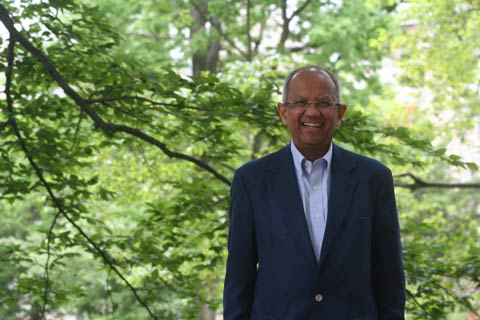
As Sumit Ganguly, professor of political science at Indiana University, Bloomington, suggests, the rise in Indian studies also grew as a result of the easing of immigration laws for Asian immigrants beginning in the 1960s, fueling a greater participation in scholarship even among immigrants. John Hawley, professor of religion at Barnard College in New York, points out that there tends to be greater interest and support for programs, seminars, and courses on South Asia in places with large immigrant communities from the subcontinent.
Above: Sumit Ganguly, professor of political science at Indiana University, Bloomington.
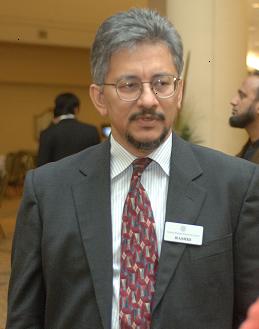
Syed Naim, senior lecturer of political science at Georgia State University in Atlanta.
While that interest is fairly uniform across the board, university-specific funding mechanisms and the broader economic climate largely dictate what gets funded. Given the general funding cuts at public universities, all centers and institutes suffer from cutbacks these days, argues Syed Naim, senior lecturer of political science at Georgia State University in Atlanta. A case in point is the Center for South Asian Studies at the University of Georgia, Athens, which has been without a director or an operating budget for over a year now.
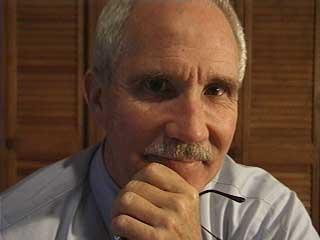
SHIFTING PRIORITIES
Farley Richmond, professor and former director of the Center for Asian Studies, University of Georgia.
When it comes to studying India, economics, public health, and business administration play a large role in what used to be the sole domain of disciplines such as anthropology and religion. Some see this as a positive change; others like Farley Richmond, professor and former director of the Center for Asian Studies, University of Georgia, wonder if other disciplines offer the depth and richness that came from scholarship steeped in religion or cultural anthropology.
John Hawley, on the other hand, argues that the changing identity of the Indian immigrant can drive the type of research and scholarly pursuits within the discipline today. Second and third generation Indian-Americans in the U.S. have been in a position to pursue careers in fields other than those that their parents or grandparents may have chosen as paths to immigrant success, according to Hawley. General mobility and status gain in the context of Indian immigrants has meant that language and history courses are sought by Indian-American students. And as Naim suggests, what gets studied and funded and researched is often a function of the prevailing geopolitical climate. That explains the greater interest in India. Several decades ago, he argues, Japanese studies were all the rage because Japan was an important economic producer. The Middle East, always of great significance to the U.S., will find research and funding support without difficulty.
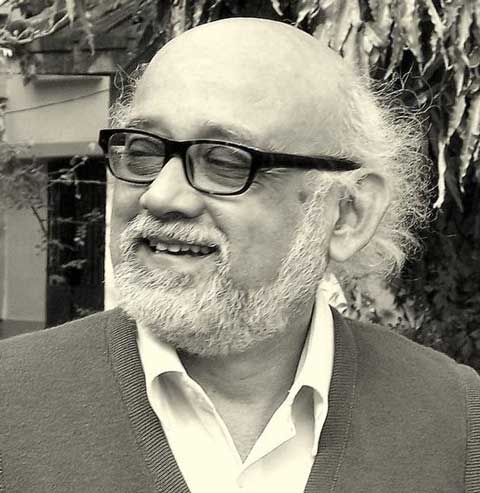
Partha Chatterjee, professor of anthropology at Columbia University, notes, “The Middle East has always had greater interest because of the foreign policy and strategic interest in the region. The interest in East Asia, too, has always been greater for the same reason. A major difference, however, is the much greater availability of funding from governments, foundations, and individuals in the Middle East or East Asia region. There is little funding of this kind from South Asia.” Lalita du Perron, associate director of the Center for South Asia, University of Wisconsin, Madison would add that fields such as Judaic Studies often benefit from huge endowments from the Jewish community at large, thus enjoying a more secure place in curricula.
Partha Chatterjee, professor of anthropology at Columbia University.
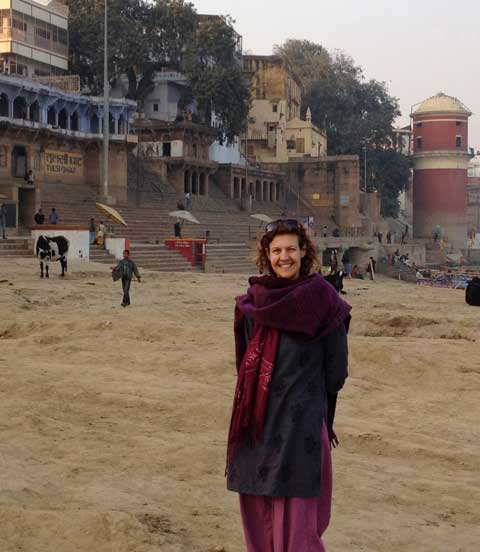
Greater interest does not necessarily mean increased scholarship. Though heritage students may drive the demand up for India-centric courses, they also tend to be the ones opting for engineering and the hard sciences. As Du Peron notes, “In years past, students signed up for anthropological research, but today, they are concerned about where they’ll land with jobs.” The visibility that India has enjoyed in the last decade through economic growth may not necessarily translate to greater interest in scholarship, but there is certainly more interest in understanding issues such as poverty, public health, and development in contemporary India.
Lalita du Perron, associate director of the Center for South Asia, University of Wisconsin, Madison. Photo taken in Banares.
Additionally, as Ruby Lal, associate professor of South Asian Studies at Emory University, points out, “In recent years, Indian scholars in particular have made a great amount of contribution to the world debates [on issues like the following]: how does our historical past implicate our present, what are the problems of poverty, globalization, and so on.” Lal also notes that Indian writers in English have played an equally important role in bringing attention to India.
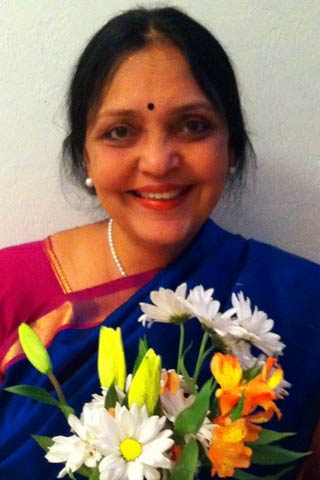
Vasudha Narayanan, professor of religion at the University of Florida.
Daud Ali, an associate professor who heads South Asia Studies at the University of Pennsylvania, adds a note of caution that the new climate of global engagement and globalism espoused by universities does not necessarily translate to greater support for scholarly research on South Asia. Ali argues that programs supporting global engagement are often underwritten by corporations or business interests with little interest in studying the said globalism using traditional academic approaches. Vasudha Narayanan, professor of religion at the University of Florida, notes that there is a general move away from area studies, which have traditionally focused on specific regions of the world, to transnational studies, which have a broader focus. That is why, she adds, organizations like the American Institute of Indian Studies are so important for linking American scholars with India. “They have probably done more for South Asian studies than any other institution,” she says.
EXPERTS ON INDIA OR INDIAN EXPERTS?
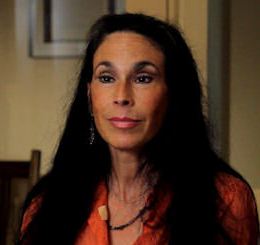
Elise Auerbach, director of the American Institute for Indian Studies (AIIS).
Who is the quintessential India Expert? Elise Auerbach, director of the American Institute of Indian Studies (AIIS), says, “There will be fewer pure ‘Indologists’ and more scholars who are subject matter experts with knowledge of specific aspects of Indian life and society.” So for instance, one would find a political scientist with comparative research interests in India and Turkey. It is harder today to identify a scholar or researcher as an Indologist and Sanskritist. That may well be a label that is anachronistic or just passé.
So who can speak with authority about India? Sumit Ganguly has decided opinions on this. Often, he fears, those called upon for opinion and advice may not always be experts. Some are “charlatans” who show up on cable news shows claiming to know all about India. Merely being Indian or living in India does not an expert make, Ganguly notes.
But Narayanan argues, “I think that it’s very important that people from India also study [in this field]. ‘Also’ is the key word here. It’s not that they have a better way of interpreting it, but I think they should join in the conversation and discussion. And I’m happy to note that more people of South Asian origin are coming in [these days].” Ruby Lal adds, “Fifteen years ago, when I began teaching in America, you often got a few heritage students. And now, that number has expanded hugely.”
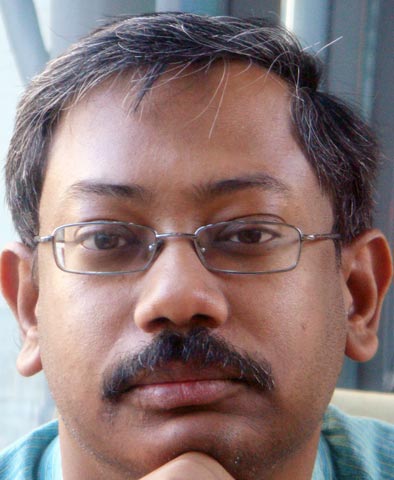
STRIVING FOR SUPPORT
Sarasij Majumdar, assistant professor of anthropology, Kennesaw State University.
What is the diaspora contribution to India studies in the Atlanta area? In Georgia and in Atlanta, for instance, a large immigrant community means that smaller universities like Kennesaw State are able to introduce new programs or courses in part through community activism and lobbying. Sarasij Majumdar, assistant professor of anthropology, Kennesaw State University, added, “Thanks to the hard work of people like Rifka Mayani, we now have a Hindi language program at the university.”The broader message to the community from scholars studying India is this: Invest. In the Indian-American community, there is great interest and support for cultural programs and community associations and a deep desire to pass on cultural and traditional practices to the next generation (through learning opportunities provided by Bala Vihar, for example). However, systematic, scholarly research that gets closer to understanding the why’s and how’s of such traditions are arguably equally important. That is why, as Ralph Nicholas, emeritus professor of anthropology at the University of Chicago, argues, it is important to support academic institutions that do this work for us. Whereas some would call it giving back, it might be more appropriate to see this support as an investment.
Such programs need community support to thrive and grow, scholars and academic administrators point out. Nicholas says, “People who are successful in the United States turn some of their gains from their professional lives to philanthropic activities.” Philanthropy in the Indian community, he observes, seems geared more to fund religious activities than to, say, “fund fellowships for students who want to learn Gujarati.” But educational philanthropy is vitally important.
“I think it takes a couple of generations for that to happen,” Narayan says. In other words, it takes many years for an immigrant community to shift gears and give back to causes other than those that are emotionally appealing, such as “temples and religious institutions.”
FUTURE PROSPECTS
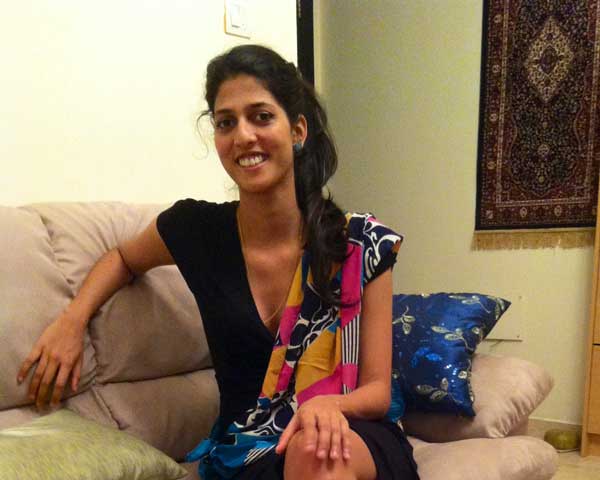
Deeksha Sivakumar, doctoral student of religion at Emory University.
“I had come to America as a 17-year-old and oftentimes my peers had asked me many questions, about what Indians/Hindus believed, why Hindus wore markings on their forehead, or if our weddings really did last for days. I felt suddenly associated to a country I was born in, but hadn’t really lived in [as an adult]. What gave me authority to answer their questions incorrectly?” Sivakumar says. “Living in a pluralistic society involves assimilation but also means making a case for specifying and maintaining your difference from others. In this web of identity politics—and for that genuine curiosity that drove many early travelers to India—graduate students like me are always motivated to research India.”
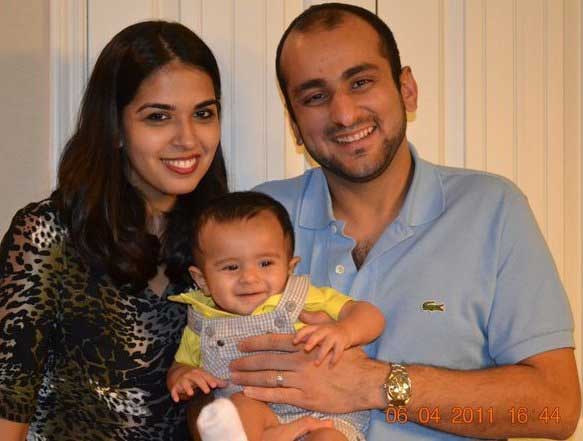
Summar Shoaib, doctoral student of religion at Emory University.
While Sivakumar’s research will one day enrich our understanding of the practice of golu in South India, Summar Shoaib’s work, again at Emory University, will help us appreciate the interplay between Islam, gender, and ritual. When she decided to take on doctoral research work, Shoaib’s friends asked why she just wouldn’t become a doctor instead or do something more practical. Nicholas agrees that many second or third generation South Asian students choose programs and courses that will have immediate and direct impact on jobs and career prospects.
However, as several other faculty members note, they are now seeing more and more South Asian students sign up for courses focusing on their ethnic heritage. In fact, Ruby Lal’s course on Indian civilization prompted serious career reconsideration among some of her students. “I taught a course on Indian civilization during my first year of teaching at Johns Hopkins [University] in Baltimore. I remember there were two young women sophomores who were aspiring medical students. One was Kashmiri and the other Pakistani. This was the first time they had read about Indian history, so they got very inspired. One day, I got a call from the mother of one of these students. She said, ‘My daughter is thrilled with your class, but she doesn’t want to study medicine anymore!’ She added, ‘Can you guarantee that my daughter is going to get a job?’” Even though Lal could not guarantee the mother a job for her daughter, she did inform her about career possibilities outside of academia.
With greater interest from the Indian-American community, scholars and faculty members may have more ammunition to lobby to keep the programs going.
Du Perron says, “In order to promote foreign relations in the future, you need people trained in both sides. There needs to be a push to get local people [living in the U.S.] to get properly educated about South Asia in the interests of long-term relations.” South Asian Americans need to play an active role in making this happen, Du Perron argues.
Perhaps Shoaib’s brief encounter during her field trips to Pakistan is emblematic of how many people may respond to scholars like her. “During my first summer of language training in Pakistan, I was picking up shalwarkameez from a well-known store in the area,” she says. “The clerk made polite conversation, asking why I was visiting. When I mentioned I was there to study Urdu, he called out to the manager, saying, ‘Look, have you ever met someone coming here to study, and studying Urdu at that? We would die to study in America and here she is, running to Pakistan!’”
Sivakumar and Shoiab, our intrepid ethnographers, represent in many ways a new type of brand ambassador for South Asian identity—one that is not merely defined by the exoticism of our cultural heritage, or our perceived work ethic, but one that truly seeks to add richness and depth of understanding to what makes us who we are.
Girija Sankar works in International Development for an Atlanta-based NGO. Her writings have also appeared in Eclectica, India Currents, JMWW, Alimentum, Youngzine, and Muse India.
“IT ALL BEGAN WITH THIS WHOLE QUEST OF STANDING IN SOLIDARITY WITH MINORITIES”
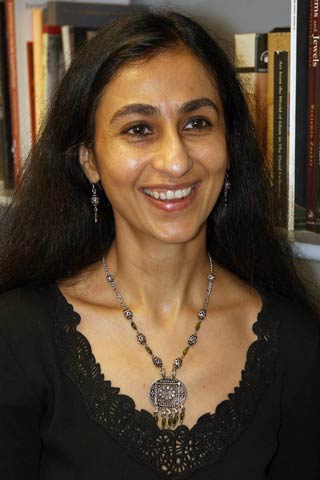
Ruby Lal, Associate Professor of South Asian Studies at Emory University.
Ruby Lal was born in Dehradun, grew up in Uttar Pradesh, went to college in New Delhi, and moved to the U.K. for her doctoral studies at the University of Oxford. She later taught at Johns Hopkins University for several years before moving to Emory University’s South Asian Studies program in the mid-2000s. She has authored two books, Coming of Age in Nineteenth Century India and Domesticity and Power in the Early Mughal World, and a collection of short stories. Her newest book, Nur Jahan, Uncrowned Empress, will be released next year.
When you decided that you would be attending graduate
school for research in your field of study, what was the
reaction in your circles?
Well, in our kinds of circles [academics, writers,
journalists], people value education a lot. I’d won a
prestigious scholarship to Oxford, so it was a celebratory
moment for my family. I come from a family of
three sisters [who] had been treated beautifully by our
parents. People think of Indians and then think of arranged
marriages, but marriage was never a question
in our family. It was a lot about career and what we
wanted to do. People might see this as an exception,
but there are many such exceptions in India.
What motivated you to study South Asian/Indian
history?
It all began with this whole quest of standing in
solidarity with minorities, with women, with Muslims.
That has been the concern of the entire body of my
book. I’ve written two books and plenty of articles on
that. The focus has been on solidarity with minority
groups—it has motivated me for a long time.
At a more general level, I’ve been very drawn to the rich, contradictory, diverse, and tolerant traditions of India. That’s what got me into it. My first book was on the Mughals. One of the things I noticed before my book came out, I realized that there was a huge gap in the study of the Mughals, which was that there was not one book on gender relations. If there was anything written about women, it was about harems. But as to what was the history of harems, what did women do, etc., none of this was there. So, that’s why I got into this work.
Was this the career path that you had always had in
mind? Or did certain experiences guide your decision to
choose this field of study and scholarship?
Right from school onwards, my best teachers were
history teachers. Then there was much storytelling at
home. My grandparents were partition migrants into
India. And so, lot of stories. My mother would read to
us every night. But when I was getting my master’s [at
Delhi University], I saw two things—one was this secular
position of standing in solidarity with minorities,
particularly the Muslim minorities in India. But the
woman question was becoming huge at that time. And
still is a very big question for India. So those were the
things that influenced me.
What do you think motivates scholars like you to
research India?
The incredibly rich, diverse, tolerant, and also
contradictory aspects of India. It’s an absolutely incredible
world with many different sensibilities, and pluralistic
religious traditions and different mind sets. To
give you an example, I’m writing my next book on Nur
Jahan—she was an empress of Mughal India. In that
time, she is a Shia woman, married to a Sunni Muslim
king. It’s a very male world and she’s not from royalty.
So, what produces a woman like that in the first quarter
of the 17th century? You have to go back in time
to think about women and leadership. So that’s just
a quick example of the number of things that drive
people like me.
If you had one take-away message for Khabar’s
readership, what would that be?
Since I’ve been talking so much about plurality and
diversity, I would like to say that we need to celebrate
this diversity. In fact, this is the kind of diversity and
plurality that marks the world we live in. So we need to
celebrate this everywhere, whether we are in America
or India. That makes for a more tolerant world, really.
“MORE AND MORE STUDENTS WANT
TO STUDY IN INDIA EVERY YEAR”

Elise Auerbach, director of the American Institute for Indian Studies (AIIS).
Postwar America’s curiosity and interest in the rest of the world fuelled the growth of area studies and language centers. The National Defense Education Act of 1958 introduced title VI, which supported the study of “uncommon languages” of strategic interest to the U.S. This funding mechanism supports teaching, research, curriculum development, and travel abroad programs that seek to train more Americans at post-secondary and graduate levels. One such center for learning is the American Institute for Indian Studies (AIIS). Established in 1962, it offers fellowships to students researching India or training in different Indian languages. Elise Auerbach, director of AIIS, spoke to Khabar from her office at the University of Chicago.
Is there now a greater interest in South Asian studies as an academic field of study?
Oh, yes, definitely. We [AIIS] are now up to 75
members. There are large research universities like the University of California at Berkeley, the University of Texas at Austin, and the University of Pennsylvania. But there are also new programs at smaller, regional public universities. One thing to note is that graduate students will get their degrees at larger, more established programs and get jobs at smaller institutions. What they then do is advocate for South Asian studies programs at these smaller institutions.
Over the last few years, we’ve also been working with a consortium of historically black colleges to send a group of students to India for language studies and service learning projects. So more and more students want to study in India every year, and more students today want to be involved in projects with NGOs (Non-Governmental Organizations) in India.
What do you think are the reasons for this growth?
The economic growth and progress in India is one factor. Another factor is the children of Indian immigrants. While the first wave of Indian immigrants from the late ’60s were more focused on establishing themselves and their family, their children and the children of their children are now more interested in academic scholarship on South Asia. Today, a huge number of students in South Asian studies programs are South Asians themselves.
Does any one academic discipline dominate this
field? Why?
I wouldn’t say that there is a single field. One of the things we do is to award scholarships for people who want to do research in India. Historically, most of the people who apply for scholarships have been from the humanities and social sciences like history, religious studies, anthropology, literature, etc. We’ve been trying to encourage applicants from the fields of public health, regional planning, and environmental studies, and we are getting more applicants from these fields today. But some fields like economics or political science seem to be dominated by people who study
theoretical issues or use data sets. So we don’t see many applications from these disciplines. But we do want more economists or political scientists to go to India and do more ethnographic work, so this is
something we encourage.
Do you think there has been an increase or decrease of funding for studying South Asia?
It’s hard to say. In some senses, funding has increased. A lot of our programs are funded by the U.S. government. We get grants from the State Department, the National Endowment for the Humanities, and the Department of Education. We rely on and are very grateful for that support, but obviously, a lot depends on what happens in D.C.
Many U.S. universities are also opening up centers in India. The University of Pennsylvania’s Center for the Advanced Study of India, for example, has opened a very impressive research center in New Delhi. So it does seem like there is greater support. Even though there has been a decrease in private donations owing to current economic times, I think that India studies have suffered less than maybe other programs on other areas of the world.
Are there now more non-Indians interested in studying India than before?
What we are seeing is actually more people who are not of Indian backgrounds, but who are also of other ethnicities. We actually have several Hispanic students, which is nice. We even had an Alaskan native student in a language program! But the single largest group of applicants is of South Asian heritage.
What do you think is the future for South Asian studies in the US?
Well, certainly, I think the future is bright. Students who go through us or study South Asia seem to
be pursuing all kinds of career paths today—some go on to work for the U.S. State Department or for the government in general, some obviously go to graduate school to pursue academic career paths, while many students today are also interested in living and working in India, either for NGOs or for Indian businesses.
I have to add there really is a great interest on the part of NGOs to receive students from the U.S. for internship opportunities. I foresee a future where there will be greater and stronger partnerships between American institutions and Indian institutions. What we’ll also see is fewer people who are pure “Indianists” or “Indologists” and more people who are subject matter experts with specific knowledge of certain aspects of Indian life and society.
Enjoyed reading Khabar magazine? Subscribe to Khabar and get a full digital copy of this Indian-American community magazine.
blog comments powered by Disqus










